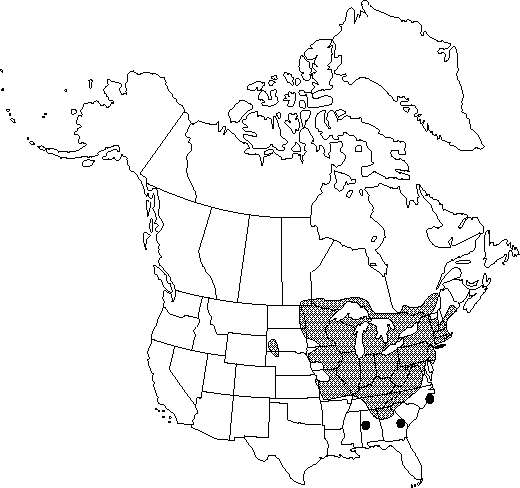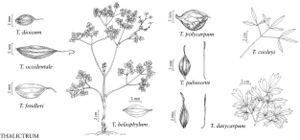Difference between revisions of "Thalictrum dioicum"
Sp. Pl. 1: 545. 1753.
FNA>Volume Importer |
FNA>Volume Importer |
||
| Line 56: | Line 56: | ||
|publication year=1753 | |publication year=1753 | ||
|special status=Endemic;Selected by author to be illustrated | |special status=Endemic;Selected by author to be illustrated | ||
| − | |source xml=https://jpend@bitbucket.org/aafc-mbb/fna-data-curation.git/src/ | + | |source xml=https://jpend@bitbucket.org/aafc-mbb/fna-data-curation.git/src/f6b125a955440c0872999024f038d74684f65921/coarse_grained_fna_xml/V3/V3_1090.xml |
|genus=Thalictrum | |genus=Thalictrum | ||
|section=Thalictrum sect. Heterogamia | |section=Thalictrum sect. Heterogamia | ||
Revision as of 19:51, 24 September 2019
Roots yellow to light brown, fibrous, from stout caudex. Stems erect, 30-80 cm, glabrous or glandular. Leaves basal and cauline, petiolate. Leaf blade 1-4×-ternately compound; leaflets reniform or cordate to obovate or orbiculate, apically 3-12-lobed, 10-45 mm wide, lobe margins often crenate, surfaces abaxially glabrous or glandular. Inflorescences terminal and axillary, panicles to corymbs, many flowered. Flowers: sepals greenish to purple, ovate or obovate to oval, 1.8-4 mm; filaments yellow to greenish yellow, 3.5-5.5 mm; anthers 2-4 mm, mucronate to acuminate; stigma purple. Achenes (3-)7–13, not reflexed, sessile or nearly so; stipe terete, 0-0.2 mm; body ovoid to ellipsoid, not laterally compressed, 3.5-5 mm, glabrous, very strongly veined, veins not anastomosing-reticulate; beak 1.5-3 mm.
Phenology: Flowering spring (Apr–Jun).
Habitat: Rocky woods, ravines, and alluvial terraces, mountains and piedmont
Elevation: 10-1000 m
Distribution

Man., Ont., Que., Ala., Conn., D.C., Ga., Ill., Ind., Iowa, Kans., Ky., Maine, Md., Mass., Mich., Minn., Mo., Nebr., N.H., N.J., N.Y., N.C., N.Dak., Ohio, Pa., R.I., S.C., S.Dak., Tenn., Vt., Va., W.Va., Wis.
Discussion
Glandular plants of Thalictrum dioicum have often been misidentified as T. revolutum despite important differences, especially the leaflets having crenate versus entire lobe margins, respectively. The stamens in both T. dioicum and T. revolutum are pendulous.
Native Americans used roots of Thalictrum dioicum in various preparations to treat diarrhea and vomiting and for heart palpitations (D. E. Moerman 1986).
Selected References
None.
